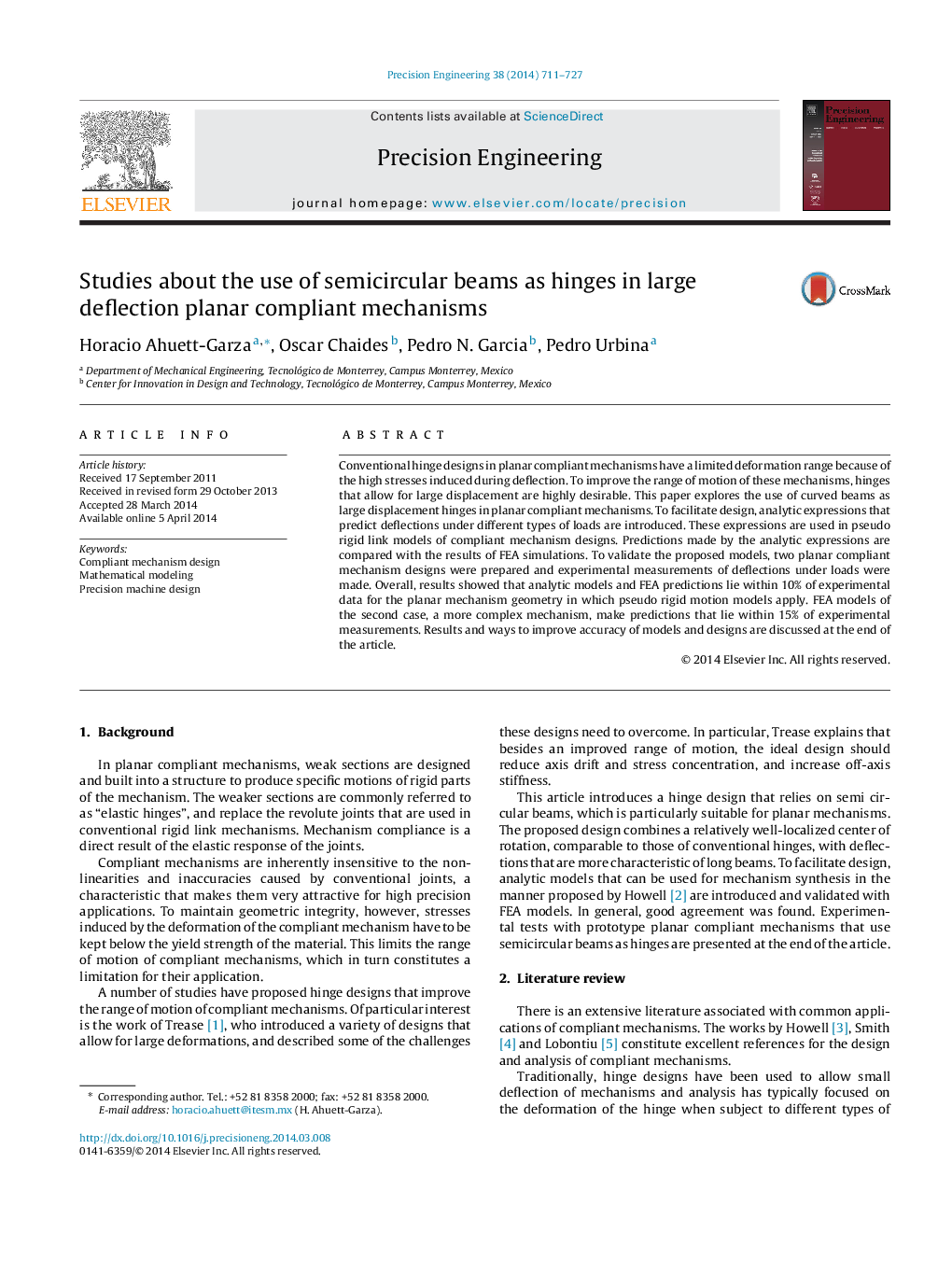| Article ID | Journal | Published Year | Pages | File Type |
|---|---|---|---|---|
| 803899 | Precision Engineering | 2014 | 17 Pages |
•This work proposes the use of semicircular beams as hinges in planar mechanisms.•Advantages of the proposed hinge design are highlighted through a series of studies.•Mathematical models for analysis and design of semicircular beam hinges are developed.•Models are validated with FEA simulation results of hinges as well as planar mechanisms.•Experimental measurements for two planar mechanisms are compared to predictions made by analytical and FEA models.
Conventional hinge designs in planar compliant mechanisms have a limited deformation range because of the high stresses induced during deflection. To improve the range of motion of these mechanisms, hinges that allow for large displacement are highly desirable. This paper explores the use of curved beams as large displacement hinges in planar compliant mechanisms. To facilitate design, analytic expressions that predict deflections under different types of loads are introduced. These expressions are used in pseudo rigid link models of compliant mechanism designs. Predictions made by the analytic expressions are compared with the results of FEA simulations. To validate the proposed models, two planar compliant mechanism designs were prepared and experimental measurements of deflections under loads were made. Overall, results showed that analytic models and FEA predictions lie within 10% of experimental data for the planar mechanism geometry in which pseudo rigid motion models apply. FEA models of the second case, a more complex mechanism, make predictions that lie within 15% of experimental measurements. Results and ways to improve accuracy of models and designs are discussed at the end of the article.
